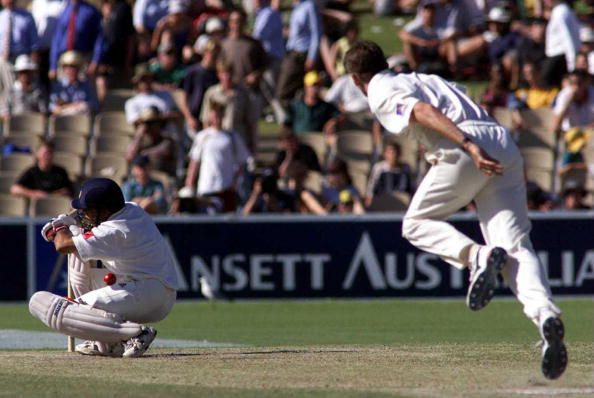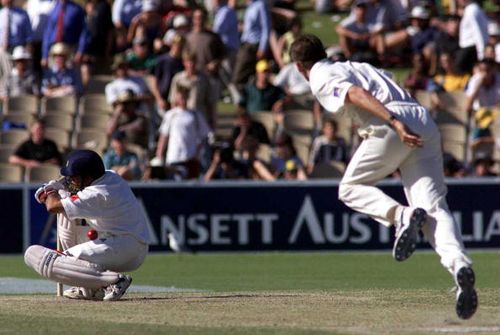
Moments that changed cricket forever: Evolution of law regarding LBW dismissals

The Glenn McGrath-delivery striking Sachin Tendulkar’s shoulder in front of the wicket led to the controversial Daryl Harper decision in the first Test at Adelaide Oval, 1999.
Wind the clocks 14 years back.
Adelaide Oval, 1999: India vs Australia.
The much anticipated Sachin-McGrath duel witnessed a rather tame end when Tendulkar was caught in front of the wicket (so to speak) after he misread a Glenn McGrath delivery that did not bounce as much as he had expected it to, and an evasive and crouching Sachin was hit on the shoulder.
Daryl Harper did take his time, but a cursory browse through the laws in his head convinced him of Sachin’s delinquency.
This famous (or rather infamous) incident created a media furore both in India and Australia.
Now, to the uninitiated this anecdote would probably make as much sense as Steve Bucknor’s umpiring gimmicks. But the fact of the matter is that cricket is full of such vagaries, and in the vanguard of such controversies, issues related to LBW decisions feature prominently.
But that isn’t above debate, considering that for a single LBW decision that the umpire attempts to make, he has to factor in three basic criteria, which have been efficiently promulgated by the DRS system.
The ball should pitch in line with the wicket, or on the off side of the stumps. Then, the ball mustn’t make contact with the bat, at least not before it hits the batsman’s pad, and that too in line with the wicket. And the obvious: the ball, if it wasn’t intercepted, should have, in all probability, hit the stumps.
Also, the umpire has to analyse the effect of the swing on the ball, the angle of delivery, as well as the batsman’s position: how far he was at the time of impact. Too many variables for a single function!
But these are not the only (although admittedly sufficient) criteria that have to be factored in while an umpire rakes through his brain.
As the shoulder-before-the-wicket incident elucidated, for a batsman to be given out leg before it is not necessary that the ball hits his leg, nor is it mandatory that the ball must hit him in line with the stumps.
Navjot Singh Sidhu might have quipped, “LBW, to the fans, is like mathematics. It hardly makes any sense.”
And much like mathematics, which evolved from a paltry set of digits to algebra to statistics and what-not, laws regarding LBW too have transformed over the years, or rather, centuries.
The earliest known written record of the laws of cricket, dated 1744, had no mention of any such rule regarding LBWs, considering curved bats were in vogue which did not permit the batsman to stand in front of the stumps. However, there was one clause that granted the umpires the authority to take action if they felt that the batsman was ‘standing unfair to strike’.
With the advent of straighter bats, batsmen were able to stand closer to the stumps, and some of them ignominiously involved themselves in football while at cricket, in order to preserve their wickets.